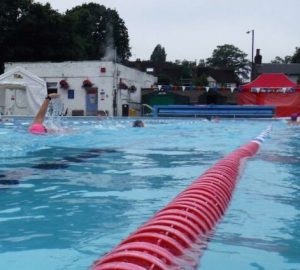Swimming training: start slow to finish fast
If you grew up in a swimming club environment or regularly train with a masters swimming club you’ll be well-used to the relentless ticking of the pace clock.
(If not, and for a brief introduction, see How to use the pace clock)
We use the pace clock to keep track of speed and performance while training in the pool. It is often a key factor in determining how much effort we put into a swim either to beat or to keep up with a certain time. Masters swimming club culture usually dictates that you bust a gut to hit the target time and you end the session broken and exhausted.
And sometimes it’s good to train like this. Not only are there physical and mental benefits, it also feels great – the swimmer’s equivalent of a runner’s high.
But there are risks too. In our efforts to keep up the speed, and as exhaustion sets in, we can fail to keep focused on swimming technique, allowing bad habits to creep in. Secondly, we have to ask if this is the appropriate way to train to meet our swimming goals. If you’re planning a long distance open water swim then only ever doing short distance high intensity efforts might not be the best way to go about it.
As well as using the pace clock as a tool to keep up your effort and intensity levels, you can also use it to help you become a more efficient swimmer. This requires a change in your mental focus as you swim. Instead of trying to squeeze every last bit of physical effort out of your body, focus on your technique and efficiency. See if you can reduce your effort levels but still hit the times by ensuring you streamline properly off each turn, that you execute a proper catch at the beginning of each stroke and you keep your head low when breathing, for example.
Initially it might help to dial down your expectations by a couple of seconds per hundred metres. On each repeat, instead of trying to go faster, aim to hit the same time but with less effort. As you persist, you should find (and it might take a few weeks or months) that you can eventually swim at your original pace but with it feeling easier – and this allows you to swim faster.
For example, say you normally swim 10 x 100m front crawl on an interval of 1:50 and hitting 1:30 for each swim. Dial back your target time slightly to 1:32 or 1:33 (you can keep the interval at 1:50) and concentrate on feeling relaxed and comfortable as you focus on perfect swimming technique (whatever technique points you’re currently working on).
Hold that sensation of flowing easily through the water. Note the time you take to swim each 100m but don’t see it as a target, just a measure. Don’t try to swim faster; try to relax even more and see if you can still hit the same time. Ask yourself, how easily can I swim and still go the same speed?
With any luck, by the time you reach repeats eight, nine and 10 you will be swimming faster than at the beginning – perhaps as fast as your regular 1:30 per 100m (or even faster) – while still feeling calm and in control.
Learning to pace your swim sessions like this is also great practice for how to pace a long distance open water swim. Start slow and finish strong.
Give it a go and let us know how you get on.







